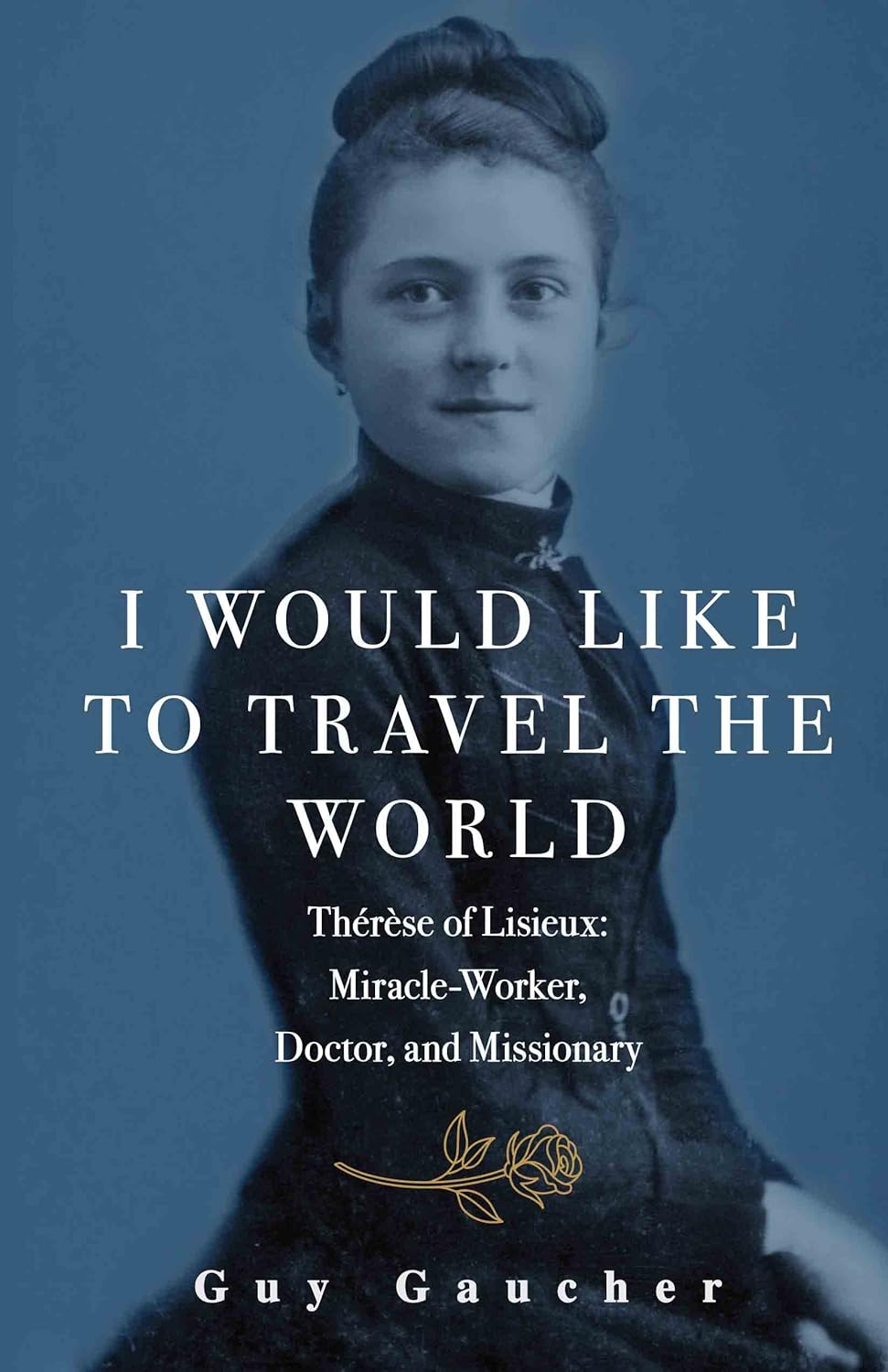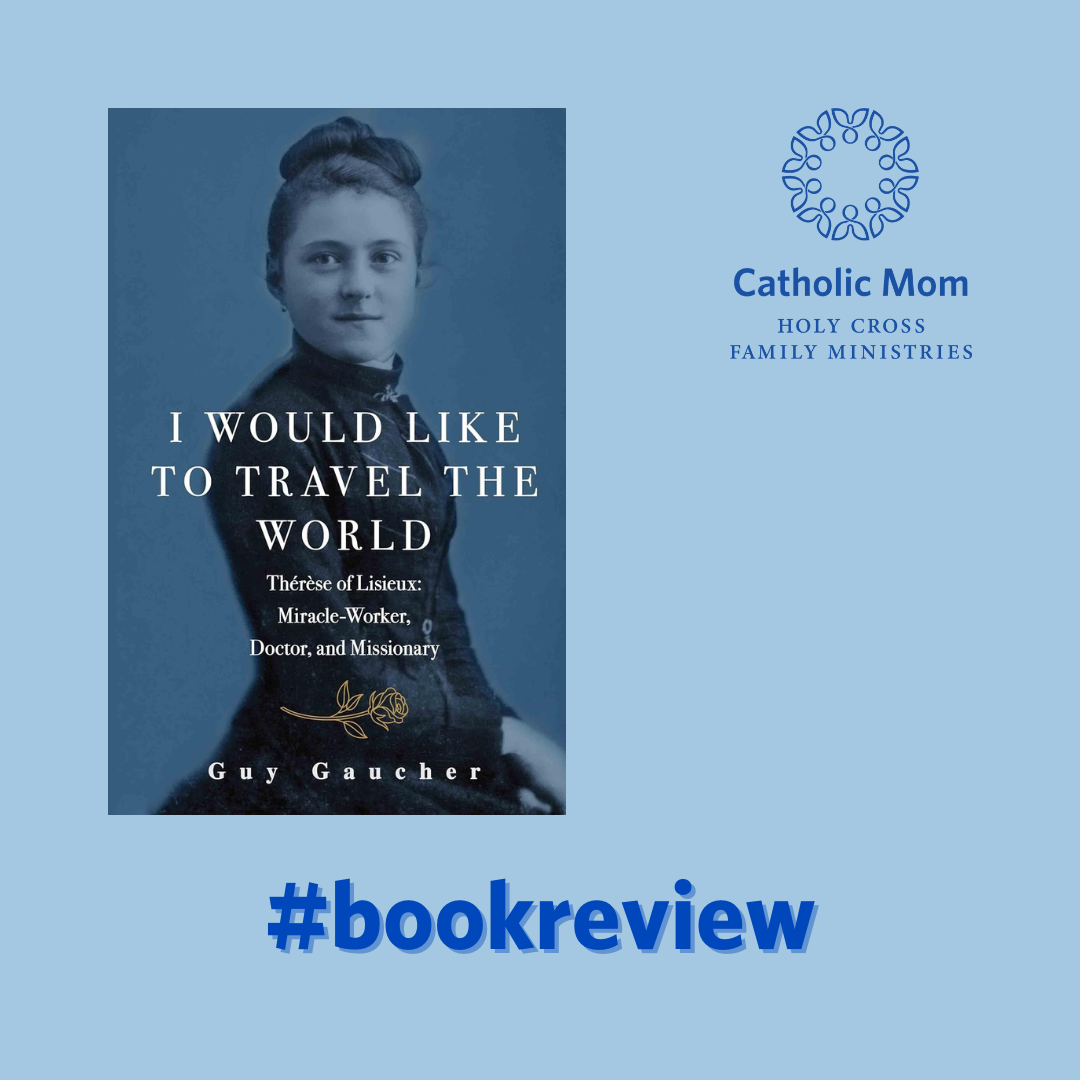
Taryn DeLong reviews a new book about how Saint Thérèse of Lisieux is fulfilling her promise to spend her Heaven doing good on earth.
There are many biographies of Saint Thérèse of Lisieux, not to mention her autobiography, Story of a Soul, which became a spiritual classic practically upon publishing. The new book I Would Like to Travel the World: Thérèse of Lisieux: Miracle-Worker, Doctor, and Missionary might be unique in its approach. It talks about her life after death—how she was declared a saint and then a Doctor of the Church and how she has been performing miracles ever since she died.

The book was written by Guy Gaucher, who was the auxiliary bishop of Bayeux and Lisieux and who directed the critical edition of Thérèse’s complete works (which were used in making her a Doctor of the Church). He died in 2014 after publishing many books about Thérèse, including this one, which was published in French in 2003. Sophia Institute Press published the English edition this year.
Becoming a Saint
I Would Like to Travel the World is organized into three parts. The first, “Thérèse the Miracle-Worker,” tells the stories of 17 reported miracles due to her intercession. The second, “Thérèse the Doctor,” tells the story of how Saint John Paul II named her a Doctor of the Church. The third, “Thérèse the Missionary,” tells the story of the journey of Thérèse’s relics through 27 countries between 1994 and 2003.
Thérèse was canonized by Pope Piux XI in 1925, only 28 years after she died. She has been incredibly popular ever since Story of a Soul was published—incredible because she seemingly did nothing important with her life. Her autobiography showed that we don’t need great deeds to become a saint. We need childlike trust in God and sacrificial love for the people he puts in our life.
So, why did Saint John Paul II make her a Doctor of the Church?
Doctors of the Church are people whom the Church has determined meet three criteria: “eminent learning, a high degree of sanctity, and proclamation by the Church.” It’s probably obvious to most people how Thérèse had a “high degree of sanctity”—but what about “eminent learning”? What great doctrine did she give to the Church?
Thèrése wasn’t a highly educated theologian, but she did give the Church what Saint John Paul II called “a true science of love.”
“Now that three women have become Doctors,” wrote Bishop Gaucher, “a new era of theology can open up. We don’t perceive it yet because a feminine theology isn’t a feminist theology. It consists not in feminizing a masculine theology but in the emerging of woman’s specific originality in her complementarity.”
Thèrése is a woman, who in approaching the Gospel knew how to grasp its hidden wealth with that practicality and deep resonance of life and wisdom which belong to the feminine genius. (Saint John Paul II)
Story of a Soul’s Afterlife
Too many people think of Thérèse as a passive, delicate little flower. Bishop Gaucher did a fantastic job of showing her as a bold, passionate woman. He quoted the late Father Marie-Eugène of the Child Jesus, a Carmelite and the founder off the Secular Institute of Notre-Dame de Vie:
Thérèse is ambitious … She wishes to climb the highest pulpit available in order to preach her doctrine with more authority and direct the spiritual struggle of love against hate.
Before she died, Thérèse told her sister, “My mission is about to begin, my mission of making God loved as I loved Him, of giving my little way to souls.” Thérèse believed that Jesus would allow her to accomplish her best work after she died—to intercede on behalf of countless people, many of whom seem like lost souls, to show them Jesus’ great love for them.
And, as the first and third parts of I Would Like to Travel the World show, she did. I won’t recount specific stories here. Instead, I want to highlight one theme that particularly struck me.
After receiving one of Saint Thérèse's “roses” (what so many of us call the miracles of her intercession) or after visiting her relics, countless people have returned to Confession. In fact, Bishop Gaucher told stories of priests preparing themselves when the relics came to their cities for a rush of people coming to Confession, some after years or even decades away from this Sacrament.
Upon reflection, I realized that it makes sense that Thérèse would compel people to come to Confession. Thérèse lived at a time when many Catholics in France were influenced by Jansenism, a heresy that led many people to despair of God’s mercy and forgiveness. It was a time and place that desperately needed Thérèse’s doctrine, which so emphasized that mercy. To this day, she continues to inspire people to find it.
Those of us who have been devoted to the Little Flower for years may think we’ve read everything there is to know about her. But, Bishop Gaucher’s book is a beautiful reminder of Thèrése’s love—which, in turn, always leads us back to God’s.
Ask for I Would Like to Travel the World at your local Catholic bookseller, or order online from Amazon.com or the publisher, Sophia Institute Press.

Copyright 2023 Taryn DeLong
Images: Canva
About the Author

Taryn DeLong
Taryn DeLong is a full-time homemaker who lives outside Raleigh, NC with her husband and their little girls. She is also co-president of Catholic Women in Business and co-author of Holy Ambition: Thriving as a Catholic Woman at Work and at Home(Ave Maria Press, 2024). Follow her on LinkedIn or Instagram.


.png?width=1806&height=731&name=CatholicMom_hcfm_logo1_pos_871c_2728c%20(002).png)
Comments